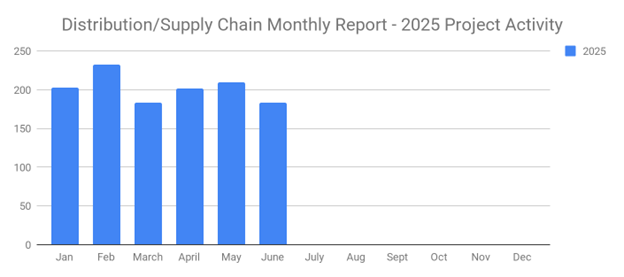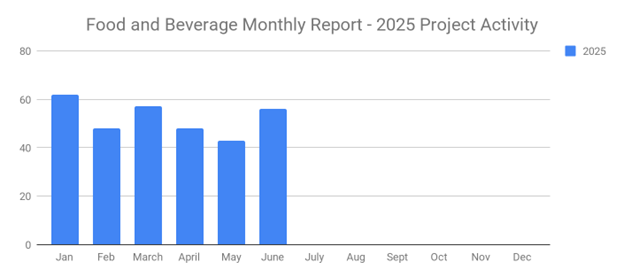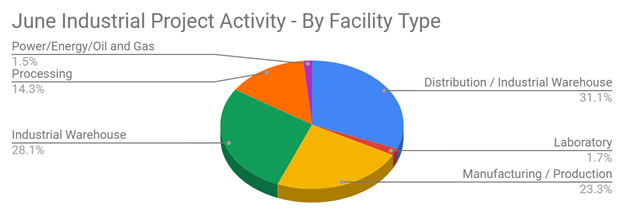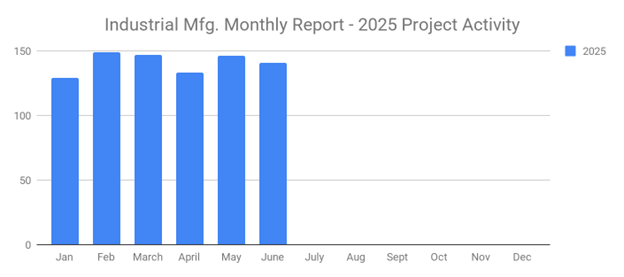
If you work in the B2B industry, you probably understand the critical role of data in business success. Every lead, customer interaction, and sales metric is represented through data, making it essential for shaping your marketing strategies, sales outreach, and overall business decisions.
However, acquiring reliable, high-quality data isn't as easy as it sounds. Many B2B companies face common data-related challenges that lower efficiency, waste resources, and reduce sales conversion rates. Without proper data management and validation, even the best sales strategies can fail due to incomplete, outdated, or incorrect information.
Below are 10 of the most common B2B data challenges, along with detailed strategies on how to overcome them and ensure your data is accurate, up-to-date, and valuable for your sales and marketing efforts.
#1) Data Decay
What is Data Decay?
Decay is a concern when acquiring data for your B2B company. Failure to use the newly acquired data fast enough may result in it becoming outdated or obsolete. A process known as data decay, it will render the data useless.
Data decay occurs when previously accurate information becomes outdated. Since businesses evolve, employees switch jobs, and contact details change, the data that was once correct and useful gradually loses its value. According to a study conducted by Gartner, the average rate of decay for B2B data is about 70% per year. To overcome this challenge, you need to use new data immediately or shortly after acquiring it.
Why This is a Problem:
- High turnover rates – Job changes mean outdated contact details.
- Company restructuring – Mergers and acquisitions result in new corporate structures and addresses.
- Shifting industry trends – Businesses expand, contract, or pivot, making older data irrelevant.
How to Overcome It:
- Schedule routine database updates – Conduct quarterly or biannual data refreshes.
- Use automated data validation tools – Integrate real-time email and phone verification.
- Partner with data providers – Leverage third-party data sources to update stale records.
#2) Incomplete Data
Incomplete data is exactly what it sounds like: datasets that are only partially filled. They may contain some information about a prospect, but other information about the prospect will remain missing. Incomplete data is common when using lead forms. If you use forms to generate leads, you may discover that some prospects only complete some of the fields. The empty fields will result in incomplete data. You can overcome this challenge by prohibiting prospects and other users from submitting forms with empty fields.
Why This Happens:
- Prospects skip fields on lead forms, leaving critical gaps in contact info.
- Sales teams fail to log key details, leading to inconsistent records.
- Data collection relies on manual entry, increasing errors.
Why Incomplete Data Hurts Your Business:
- Limited customer understanding – Without full data, segmentation and targeting suffer.
- Poor sales follow-up – Missing contact details make lead nurturing harder.
- Inaccurate analytics – Gaps in data lead to misguided business decisions.
How to Fix It:
- Make key fields mandatory – Require essential details like company name, job title, and phone number.
- Use progressive profiling – Collect basic information first, then gradually expand details.
- Leverage AI-driven enrichment tools – Automatically fill in missing data from verified sources.
#3) Lack of Insight Into Target Businesses
Even if you generate leads or otherwise acquire information about prospects, you may have little or no data on your B2B company's target businesses. Target businesses, of course, are the businesses that you are trying to capture and convert as customer accounts. The more you know about them, the better your chance of landing them as a customer. Unfortunately, many B2B companies focus on demographics data. They acquire data about prospects, such as the genders, age ranges and job titles of high-level executives, only to turn a blind eye to business-related data.
Why This Hurts Sales & Marketing:
- No firmographic data – Sales teams know the contact name but not the business background.
- Outreach feels generic – Without deep insights, pitches lack personalization.
- Missed high-value opportunities – Key prospects aren’t identified properly.
How to Gain Better Business Insights:
- Combine demographic & firmographic data – Understand both the person and the business.
- Use predictive analytics – Identify companies with growth potential.
- Leverage competitive intelligence tools – Track market trends and competitor activity.
You can improve your B2B company's sales process by using a combination of both demographics and firmographics data. Demographics data is exclusive to people. As previously mentioned, it includes information like genders, ages and job titles. Firmographics, on the other hand, is exclusive to businesses. It includes information like the number of employees a business has, the region in which a business operates and the age of a business.
#4) Low-Quality Leads
Low-quality leads is a common challenge when acquiring data for use in B2B sales. Research shows that up to 40% of all leads consist of bad or low-quality data. For every 100 leads that you generate, for instance, less than half of them may be viable sales opportunities. You'll waste time and resources chasing down the majority of the leads. To overcome this challenge, you should focus on acquiring higher quality leads. It's not the number of leads that matters most. Rather, it's the quality.
What Makes a Lead Low-Quality?
- Fake or incorrect contact details – Users enter invalid emails or phone numbers.
- No purchase intent – The lead has no real interest in your solution.
- Irrelevant industry or job title – The lead isn’t a decision-maker or doesn’t fit your ICP (Ideal Customer Profile).
Why Low-Quality Leads Hurt Sales Performance:
- Sales teams waste time chasing leads that won’t convert.
- Marketing spends resources targeting the wrong audience.
- Lower ROI on lead generation efforts, leading to higher customer acquisition costs.
How to Eliminate Low-Quality Leads:
- Implement lead scoring – Prioritize leads based on engagement and intent.
- Validate data at entry – Use email and phone verification to filter out bad data.
- Refine targeting criteria – Focus on high-intent prospects rather than quantity.
#5) Protection From Breaches
Data often contains information about prospects and buyers. Therefore, you'll need to take precautions to ensure that it doesn't fall into the wrong hands. During the third quarter of 2022 alone, 15 million data records were exposed. If your B2B company experiences a data breach, you may lose some of this data. Hackers or other bad actors may obtain it, which can have a catastrophic effect on your B2B company's reputation. You can protect against data breaches, however, by following some basic steps. Encrypting data, for instance, will make it unreadable without the decrypt key, and only storing data on secure platforms, such as a local server or device, will further minimize the risk of breaches.
Why This is a Critical Issue:
- Loss of customer trust – Breaches damage brand credibility.
- Regulatory fines – Non-compliance with GDPR, CCPA, and other regulations can lead to heavy penalties.
- Competitive risk – Leaked data provides valuable insights to competitors.
How to Strengthen Data Security:
- Encrypt sensitive information – Ensure stored & transmitted data is protected.
- Implement multi-factor authentication (MFA) – Add extra security layers.
- Audit security measures regularly – Identify and fix vulnerabilities proactively.
#6) Data Silos
Another challenge associated with data in the B2B industry is silos. Data silos are segments of data. Also known as information silos, they are particularly common among B2B companies with a dedicated sales team and a dedicated marketing team. The sales team will have its own data, and the marketing team will have its own data. Rather than sharing their data, they will keep it isolated to their respective data. This is an example of data silos. The sales team and marketing team have segmented data or "data silos." You can overcome data silos by encouraging sales reps and marketing professionals to share data.
Why This Happens:
- Sales & marketing teams don’t share data – Each team keeps separate records.
- Lack of integration – CRM, email marketing, and analytics tools don’t sync.
- No centralized data repository – Data is scattered across multiple systems.
How to Fix It:
- Unify data with a CRM – Keep all sales & marketing data in one platform.
- Encourage cross-team collaboration – Foster a culture of data-sharing.
- Use automation for data syncing – Ensure all platforms stay updated in real-time.
#7) High Cost of Data Acquisition
How much money does your B2B company spend on acquiring data? Even if you in-house methods to acquire data, your B2B company will incur costs. And spending too much money on data acquisition can make it difficult for your B2B company to turn a profit. Fortunately, there are ways to lower the cost of data acquisition. Leveraging automation, for instance, can save your B2B company money on data acquisition. You can also cut the cost of data acquisition by using account-based marketing (ABM).
Why This is an Issue:
- Expensive third-party data providers – Quality data comes at a high price.
- Manual data collection is slow & costly – Wastes time and resources.
- Budget waste on low-value leads – Money is spent on bad data with low ROI.
How to Reduce Costs Without Sacrificing Quality:
- Leverage AI for data collection – Reduce reliance on manual processes.
- Use account-based marketing (ABM) – Focus on high-value targets.
- Refine targeting strategies – Optimize lead generation efforts to minimize costs.
#8) Duplicate Data
Duplicate data is a challenge faced by many B2B companies. It involves two or more identical records. When you have duplicate data, you may unknowingly reach out to the same prospect multiple times. You can deal with duplicate data by regularly checking your B2B company's data records for duplicate entries. If the same record or entry appears multiple times, remove all but one instance of it.
Why Duplicate Data is a Problem:
- Sales reps waste time on redundant outreach.
- CRM data gets cluttered, reducing efficiency.
- Reporting & analytics become inaccurate.
How to Prevent Duplicate Data:
- Regularly clean your CRM – Remove redundant records every quarter.
- Use AI-powered de-duplication tools – Merge duplicates automatically.
- Standardize data entry rules – Prevent duplicates at the source.
#9) Poor Data Management
Poor data management is a common challenge of which you should be aware. Acquiring relevant data about your B2B company's audience is only half the battle; you must also put that data to use by including it in your B2B company's sales strategy. Data data management is the process of maintaining and keeping data records so that you can use them for sales, as well as marketing, purposes. You can use software like Customer Relationship Management (CRM) software to better manage your B2B company's data.
Why Poor Data Management is Costly:
- Sales & marketing teams work with outdated or inaccurate data.
- Lost revenue opportunities due to mismanaged insights.
- Inconsistent customer records across systems.
How to Fix It:
- Invest in a robust CRM system – Organize, store, and manage data efficiently.
- Train teams on proper data entry – Reduce human error.
- Create standardized data workflows – Maintain long-term data integrity.
#10) Corrupted Data
Corrupted data is a concern as well. Data is considered corrupted if it triggers an error during writing, reading or processing. Most forms of B2B data consist of files. Like all other computer files, these data files can become corrupted. You may not be able to use a data file if it's corrupted. You can overcome the challenge of data corruption by regularly backing up your B2B company's data. If you encounter an error with a particular data file, you can use the backup copy to restore it.
What Causes Data Corruption?
- Software crashes & system failures.
- Human errors during data entry or processing.
- Cyberattacks that corrupt files.
How to Prevent & Fix Corrupted Data:
- Schedule regular data backups – Always have a secure copy available.
- Use error-detection software – Identify and repair corrupted files immediately.
- Implement strict access controls – Prevent accidental or malicious corruption.
Final Thoughts: Turn Your Data Into a Sales Powerhouse
To get quality data with your sales leads, be sure to ask SalesLeads about our project reports and prospecting services. These are identified projects, meaning they have a project either going on or about to start. This is perfect if you are looking for potential new sales in order to grow your pipeline and business.
📌 Want to improve your B2B data strategy? SalesLeads provides verified, high-quality industrial project data to help businesses find, connect with, and convert the right prospects.
🚀 Visit SalesLeadsInc.com today!
What to learn more? Get in Touch
Latest Posts
-

June's New Distribution and Supply Chain Planned Projects Return to March’s 183 Confirmed Figure
-

Food and Beverage Rebounds with 56 New Planned Projects Igniting Growth After Decline
-

June 2025’s New Industrial Construction Projects Grew 7% Month-Over-Month
-

Q2 Industrial Manufacturing Soars 31% for Planned Projects Over $100M; June Planned Industrial Projects Hit 141

